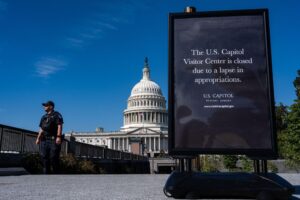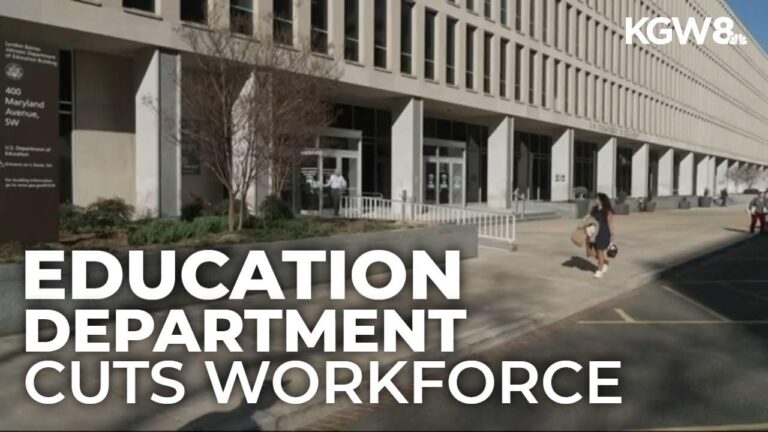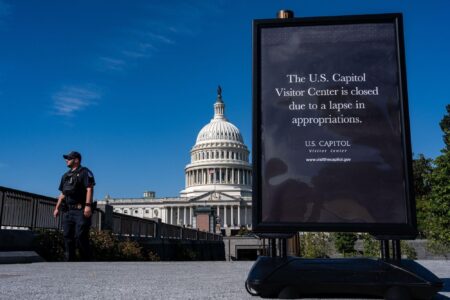Significant Workforce Downsizing at the U.S. Department of Education: Implications and Strategic Responses
Substantial Staff Reductions Disrupt Federal Education Programs
The U.S. Department of Education has recently undergone an unprecedented workforce contraction, eliminating nearly half of its employees. This drastic reduction has created operational challenges across multiple federal education initiatives, threatening the department’s ability to effectively manage programs that support K-12 education, student financial aid, and equity-focused services. Critical divisions responsible for policy enforcement and grant administration are now facing severe understaffing, resulting in delays in program implementation and the distribution of funds nationwide.
Immediate repercussions include:
- Longer wait times for processing student loan applications and forgiveness requests
- Weakened oversight of compliance in federally funded educational institutions
- Interrupted assistance for special education and marginalized student populations
| Program Sector | Impact Level | Anticipated Delay |
|---|---|---|
| Student Financial Aid | Moderate | 4-6 weeks |
| K-12 Oversight | Severe | 8-10 weeks |
| Special Education Support | High | 6-8 weeks |
Underlying Causes Driving the Department’s Workforce Reduction
Facing stringent federal budget constraints and evolving policy priorities, the Department of Education has opted for a significant downsizing of its workforce. Central to this decision are budgetary austerity measures that redirect funds toward direct classroom support and student services, thereby limiting administrative expenditures. Concurrently, the department is embracing digital innovation and operational streamlining, which reduces reliance on traditional bureaucratic roles.
Both internal evaluations and external economic pressures have accelerated this shift toward efficiency, prompting a move away from legacy administrative processes. Key factors influencing the reduction include:
- Adoption of automation and advanced technology to minimize manual tasks
- Policy reforms favoring decentralized management of education programs
- Performance optimization leading to elimination of redundant roles
| Factor | Effect on Staffing |
|---|---|
| Federal Budget Reductions | Triggered layoffs and hiring freezes |
| Digital Modernization | Decreased need for administrative personnel |
| Policy Decentralization | Shifted control to local entities |
| Operational Streamlining | Removed overlapping positions |
Implications for Student Services and Policy Execution
The sharp reduction in staff threatens to disrupt essential communication channels and support mechanisms that many students depend on. With fewer employees managing programs, delays in processing financial aid, scholarships, and loan assistance are likely to increase. This impact will be especially pronounced for underserved and minority students who often require additional guidance navigating complex educational systems. Furthermore, the department’s capacity to offer timely academic advising and mental health resources may be compromised, potentially affecting student outcomes.
At the policy level, diminished administrative resources could slow the enforcement and rollout of new education reforms at both federal and state levels. This slowdown risks undermining the consistency and effectiveness of policy implementation. The table below highlights key areas of concern and their potential consequences:
| Area of Impact | Possible Outcome | Severity |
|---|---|---|
| Financial Aid Processing | Backlogs and extended approval times | High |
| Student Counseling | Reduced access and slower response | Moderate |
| Policy Enforcement | Delayed implementation of reforms | High |
| Equity Initiatives | Risk of underfunding and neglect | Critical |
- Students may encounter increased obstacles in accessing essential educational resources.
- Schools and districts might face challenges compensating for reduced federal support.
- Long-term effects could include exacerbated educational disparities.
Proactive Strategies to Address Workforce Reductions and Sustain Operations
To effectively manage the challenges arising from a nearly 50% staff cut, department leadership must focus on strategic workforce planning and comprehensive knowledge retention. Prioritizing critical roles and reallocating resources can help minimize service disruptions. Implementing cross-training initiatives will empower remaining staff to cover multiple functions, ensuring continuity without sacrificing service quality.
Additionally, integrating automation and AI-powered tools can boost productivity and ease the burden on a smaller workforce. Transparent communication is vital to maintain employee morale and safeguard institutional knowledge. Recommended approaches include:
- Establishing succession planning to cultivate future leadership
- Enhancing employee wellness programs to reduce turnover
- Utilizing data analytics for strategic decision-making
- Building stronger collaborations with external partners to share resources and expertise
| Approach | Expected Benefit | Priority Level |
|---|---|---|
| Cross-Training Programs | Broadened employee skill sets | High |
| Automation Deployment | Improved operational efficiency | Medium |
| Succession Planning | Leadership continuity | High |
| Open Communication | Increased staff engagement | High |
Final Thoughts: Navigating a New Era in Federal Education Administration
The U.S. Department of Education’s decision to reduce its workforce by nearly half represents a pivotal transformation in how the agency operates. While aimed at improving efficiency and reallocating resources, this move raises significant concerns about the department’s ability to maintain critical educational programs and services. As the department adapts to this leaner structure, education stakeholders will be watching closely to assess the effects on policy execution and student support. Ongoing updates will shed light on how the department plans to balance fiscal constraints with its mission to advance equitable education nationwide.







